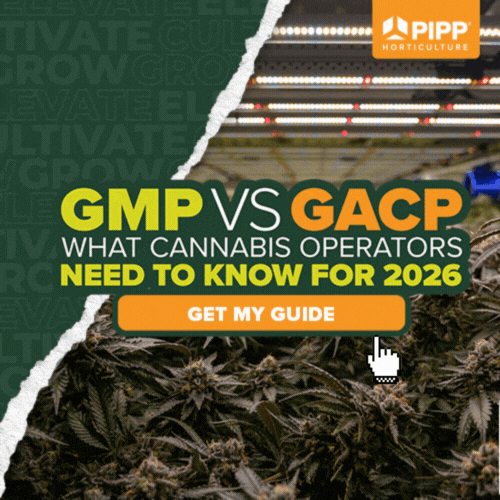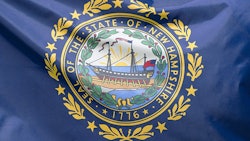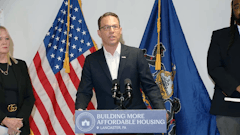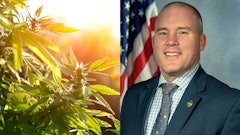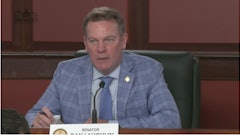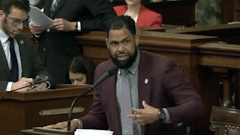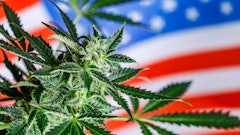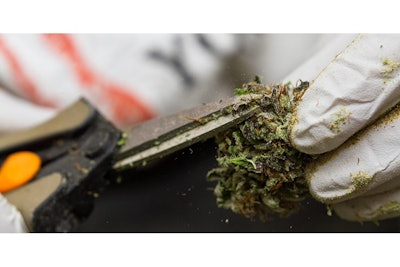
Given the imbalance between cannabis producer licenses and cannabis retail licenses in Washington state, prices have plummeted and small farmers are struggling to find a way to get their products in front of customers. Ongoing discussions over how to solve this problem have coalesced into a new possibility: The Washington State Liquor and Cannabis Board (WSLCB) and state legislators are considering allowing direct sales at cultivation sites.
Kevin Oliver, executive director of Washington’s NORML chapter, says that the current conversations are the product of a volatile, young marketplace revealing cracks in itself. An oversupply problem has run rampant in the Pacific Northwest.
“What we’re talking about here in Washington, in terms of direct sales, isn’t what [WSLCB Director Rick] Garza calls vertical integration,” Oliver says. “We’re talking about [something] very similar to the winery model.” (Washington does not allow vertical integration.) This proposal would allow farmers to open their properties to customers and sell products cultivated on the very land that, say, group tours would walk.
The WSLCB is also the state regulator of alcohol sales, and so its cannabis rules have closely tracked the liquor and wine industries. When the state legalized adult-use cannabis, the board capped the number of retail stores (334) at roughly the same number of state-owned liquor stores (328) that had been open prior to the 2011 voter-approved privatization of that marketplace.
When Washington rolled its existing medical cannabis into its broader adult-use market in 2016, according to the Cannabis Patient Protection Act, the number of cannabis dispensaries rose to 556.
According to the WSLCB, the state has issued 1,205 cannabis producer licenses.
Growers, then, have had to rely on distributors and retailers to engage their customer base.
And much like the first steps Washington took to create a more consumer-friendly wine industry (in a region known nationally, if not globally, for its wine production), the state is now heading in the direction of allowing direct sales to consumers at cannabis farms (in a region known nationally, if not globally, for its outdoor cannabis cultivation).
“The initial idea was that … you can come to a winery and do a vineyard tour, just like in California,” Oliver says. “You can go out, you can buy a bottle of wine or whatever [and] you can sample on-site, and that doesn't hurt the retail store sales at all. In fact, it could actually increase retail store sales; if a person becomes brand-loyal, they'll go out and make sure that the stores have that brand and they'll buy at the store.”
Oliver says that state lawmakers and regulators—and early industry advocates—had discussed forms of this type of marketplace as part of a broader debate over vertical integration when it came time to implement the voters’ legalization initiative. In Colorado, though, the strains of market consolidation were clear. Washington decided to stay away from a model that would allow larger out-of-state companies to acquire small companies and square off significant market share for themselves.
“The effort today is to follow in that initial concept, which is direct sales for small farmers,” Oliver says. “But the reason it’s coming to a head today is because so many small farms are struggling right now. And, you know, they're out in rural areas that are underserved in the first place. And there are some production facilities in areas that have banned retail sales. So, it would increase access from a consumer point of view. It would also encourage the kind of organic consumer-to-farm feel, where people are allowed to go out and touch the ground their plants are growing in and then sample the product— very much like a winery.”
What this proposal will look like is still being discussed by the WSLCB and state legislature, but that’s a sign, Oliver says, that there’s significant buy-in from the regulators this time. One concern over this type of rule change has always come from vocal retailers interested in maintaining the pipeline to consumer demand.
The idea now is to complement the existing structure equitably.
“We're not talking about putting up a brewery in the middle of Seattle that's going to compete with the top-grossing retail store just down the street,” Oliver says. “And it's technically not going to be a storefront; they’re not going to be allowed to sell anything except what is produced on-site. So, they're not going to be competing with a retail store establishment where you can find thousands of SKUs from dozens of different producers.”
More broadly speaking, this is an example of what WSLCB board member Jane Rushford called “Cannabis 2.0” during a Nov. 27, 2018, board caucus. As legalization policies are normalized in more U.S. markets, regulators’ best practices are evolving. What’s necessitated now, Rushford told her colleagues, is a more active approach to overseeing the Washington marketplace.
“I want to look out three years and five years and say, ‘Where are we going to be?’” she said. “‘What are licensees going to need? What do we need to be doing to ensure that we have those runways in place?’”
She added that those questions—the debates over how Washington will fit into a broader U.S. market in the eventual reality of federal legalization—will set the frame for the board’s caucus discussions in the future, and she specifically mentioned the matter of on-site sales and consumption.

